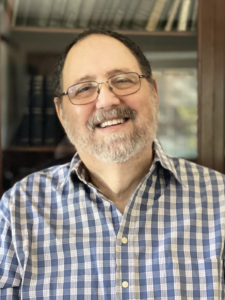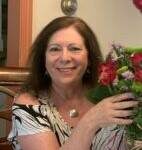
Rabbi Lance J. Sussman
Parshat Vayeshev
Ironically, one of the persistent questions about how to observe Chanukah since the establishment of the holiday in the second century BCE is defining the extent of its public nature.
The story of Chanukah begins in a time of persecution and darkness when Judaism was forced underground by the Seleucids. A legend even developed that the dreidel game was developed as a decoy while “‘forbidden” Chanukah activities were taking place “inside.”
Originally, the Chanukah menorah was lit outside of one’s home on the left side both to complement the mezuzah and to “publicize the miracle” or Pirsumei Nisa. However, in times of persecution, it was determined that the menorah could be moved indoors. Even then, the impulse was to place the menorah in a window from which people on the outside could see the lights and be inspired by the story of the miracle of the oil.
The perpetual challenge of Chanukah — to determine the balance between Jewish pride and security — is particularly relevant to our situation today.
With the widespread spiking of antisemitism now accelerated by the 2023 Hamas pogrom, there are reports from Jewish communities across the globe that people are pulling back from public displays of Jewishness. Of course, this is nothing new in the long history of the Jewish people. Still, the feeling that one has to remove a mezuzah, not wear a kippah or provide any visible evidence of Jewishness is concerning.
In traditional Judaism, there are a number of requirements concerning personal appearance which identify a person as Jewish. Beginning in the 14th century in Europe, the Catholic Church ruled that Jews also had to wear a distinctive garment. For those familiar with medieval art, the Jews’ hat was one such symbol as well as a badge or star which was later revived by the Nazis.
In modern times, with Emancipation and the desire to “fit in,” many Jews reduced their personal Jewish symbols in an attempt to “blend in,” even while taking other measures to preserve their Jewishness and Judaism in the new and unprecedented circumstances. Similarly, many changed both their first and family names.
How much Jewishness to display is an ongoing question.
In Israel, the displaying of Jewish-themed jewelry was very popular when I lived there in the mid-1970s. Subsequently in the observant community, I have noticed payot (side curls) and tzitzit (fringes) becoming longer and more visible. However, I still don’t see many people wearing “Kiss Me I’m Jewish” T-shirts compared to Irish or Italian in the more secular end of the community.
Ultimately, the decision of how much Jewishness to display is a function of one’s relationship to tradition and one’s own self-image. Chanukah is part of that challenge.
Back in 2018 after the attack on the Tree of Life synagogue in Pittsburgh, one of my grandchildren challenged their parents about the wisdom of putting up Chanukah decorations that year because as she said, “A lot of people don’t like us!” The decision was to go ahead and show some blue.
Subsequently, one of the girls went online and ordered a necklace with a slightly larger Jewish star than what she had been wearing. That took courage. She continues to wear her Magein David to this day.
While tradition allowed for the Chanukah menorah to be moved indoors, the will of the people was not to make it totally invisible to the outside world.
I am reminded of an article and headline which appeared in a German Jewish newspaper in April 1933 in the wake of a violent boycott against the Jewish community there which included the painting of Jewish stars on the fronts of Jewish-owned businesses. “Jews,” the paper urged, “Take it up, the Shield of David and wear it with pride.”
Tradition asks us to be strong and emulate the Maccabees. To strengthen that message, the rabbis identified a powerful image from the prophetic book of Zechariah (4:1-7) to be read on the Shabbat of Chanukah. In his vision, Zechariah saw a seven-branch menorah perpetually supplied by two olive trees. “Not by might, and not by power, but by My spirit,” the prophet declared in the name of the Eternal One.
In other words, we need to have faith, courage and strength, especially in dark times. Certainly, Chanukah implores us to do so!
Have a happy, light-filled Chanukah!
Lance J. Sussman is rabbi emeritus of Reform Congregation Keneseth Israel, the immediate past chair of the board of governors of Gratz College, a visiting professor at Delaware Valley University and vice president of the Board of Rabbis. The Board of Rabbis of Greater Philadelphia is proud to provide diverse perspectives on Torah commentary for the Jewish Exponent. The opinions expressed in this column are the author’s own and do not necessarily reflect the view of the Board of Rabbis.





